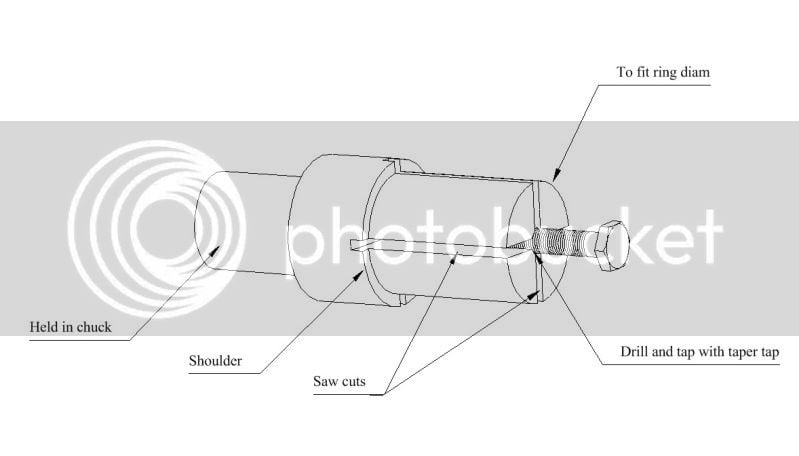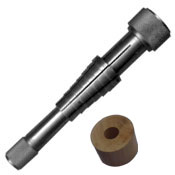Hi Andy:
It depends on how up-tight you want to get about it. (and whether or
not you’re working in wax.) Wax makes life harder, as it has no
strength.
To do it ‘right’ you need either lathe mandrels, or expanding
mandrels. Both very expensive. (MSC has them, page 1629 of the
catalog. www.mscdirect.com) Solid mandrels are.0005" undersize, and
taper up to about.0005" oversize. You slide your piece onto the
mandrel and gently drive it up a bit, then turn the piece with the
mandrel mounted between centers. In ring size ranges, they run
between $10-$20 each, and you’d need lots of them unless you only
do a couple of sizes.
There are expanding mandrels that’d cover a wider range of sizes,
but in ring scale, those run between $60-80 each, and you’d need at
least 5-6 of them to cover most rings. Again, mount ring on mandrel,
turn between centers.
My trick is just to make my own mandrels as I need them. It’s also
important that I have a lathe that uses collets to hold the work. I
can put the ring into a large collet, and grip it around its entire
surface without marring. Try that with a three-jaw chuck, and you’ll
shred your surface.
Step 1: Grab ring in large collet. Bore ring to size. (any size, but
ideally to final size, less about .005".) (a few thou for finishing.)
Make sure ring sits in collet with axis of ring in-line with axis of
lathe. Don’t let it tilt.
It’s important that the bore of the ring is actually bored to an
accurate diameter all the way through. That’s what lets it lock up
on the mandrel in the next steps.
Step 2: Measure bore of ring.
Step 3: take a hunk of aluminum rod, chuck it into the lathe. Leave
2 inches clear of the chuck. Center drill for support later.
Step 4: Turn aluminum to match the bore of the ring. When I’m feeling
particularly tricky, I turn for a shrink fit. That’s where I turn the
rod very slightly oversized, and throw it in the freezer to shrink
it a bit. Pull it out of the freezer, mount the ring, and they’ll
lock together as the rod warms up and expands. By ‘very slightly’ I’m
talking about.001"-.002" or so. There are tables for that sort of
thing in Machinery’s Handbook. Don’t try to wing the fit. Look up
the proper interference for your relative bore diameters in the book.
You’re looking for a very light interference fit, as you need to get
the ring off again later.
If I’m feeling like I might want to use this mandrel again, I make it
a little longer (3-4") and turn it with a very slight (about .25 deg)
taper, so that it starts out undersized, and ends up slightly over.
The ring will lock up somewhere along that length. Don’t to try to
fit the ring immediately: the rod will be hot from turning. It’ll
shrink as it cools, and the ring will loosen. That will be bad. Let
the rod cool, then try to fit the ring.
When you’re actually turning on the ring, remember to use the live-
center in the tailstock to support the end of the mandrel. (and
remember to be very gentle. That interference fit isn’t much to grip
with.)
Do your turning, then throw the thing in the freezer. The different
contraction rates should make it very easy to knock the ring off
once the mandrel’s frozen.
(I’ve also been known to bore out aluminum mandrels, on very thin or
lacy rings. Junking a one-shot mandrel’s a whole lot cheaper than
redoing a gold ring.)
Regards,
Brian.

